ZMINA: Rebuilding:Under the Lying Stone, Water Does Not Flow

The project aimed to strengthen the relationship between artist-run and non-institutional cultural spaces in Poland and Ukraine while questioning and sharing how Ukrainian cultural heritage, art and contemporary critique can be popularised abroad. As part of this project, the partners produced two publications, two exhibitions, five essays published online and one capacity-building workshop.
They have a twofold approach to rebuilding. The first deals with ‘rebuilding’ an approach to Ukrainian culture from a position of decolonisation and environmental ethics together with artists, writers, and researchers. The second discussed rebuilding the independent cultural sphere by organising a capacity-building workshop.
The project was implemented by Fundacja Ziemniaki i (PL), Stroboskop Art Space (PL), BLOK Magazine (PL), and Ksi-Prostir (UA). We have read the publications, learned about the exhibitions, and are ready to share the highligts of the projects with you.
How to make rockets disappear
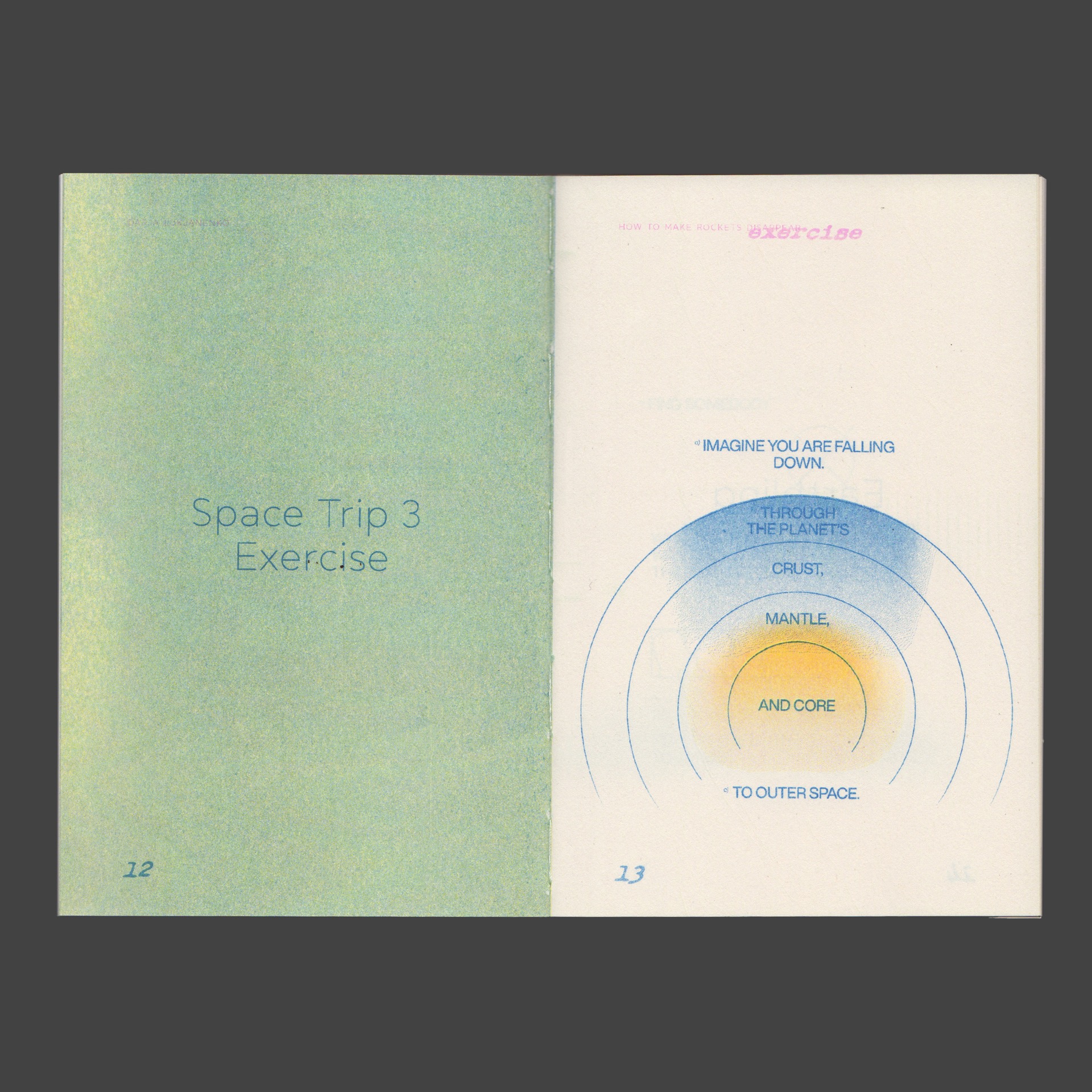
Author: Darja Lukjanenko
Design and Printing by Okazjonalne Wydawnictwo Stopka
Darja Lukjanenko has written an intimate story that, through interaction with readers on many levels, turns into something global. The author's grandparents were rocket engineers in the Soviet Union, and their work was classified for many years. Even after the collapse of the Soviet Union and declassification, they could not talk about what they did for a long time. They dreamed that their granddaughter would one day become an engineer too. But she became an artist and created a powerful project that touches hearts with its intimacy and at the same time opens up extremely complex philosophical questions. The author also confronts the aggressive Russian cosmism and opens up the traumatic subject of rocketry.
Darja is convinced that rockets are evil, so the book is read under the pressure of anxiety and with a sense of something unknown being formed. This also works because the book is a collaboration with readers. It contains not only texts, comics and illustrations, but also a list of exercises: space trip, earthling experience, earth walk, making rockets disappear, gravity sensitivity exercise, apocalyptic vision exercise, small talk exercise, alien dinner exercise etc.
At first glance, these exercises seem like an ordinary game - relaxed and somewhat childish. But each exercise contains thoughts about humanity, the impact of mechanisation and questions about the development of society. "Imagine you are an alien. Experience everything for the first time. Stay alienated." suggests the author. Or: “recall the person whose beliefs, views, and principles are opposite to yours. Have dinner together.”
At the same time, the author's book does not have exclusively pacifist intentions. In her epilogue, she suggests that readers take a test to determine whether their world is safe or threatened. If the world is currently unsafe, the author suggests taking care of yourself, helping those in need, and fighting until the world becomes safe. Only when the world is safe can rockets be destroyed.
There are many things on our planet that we do not understand. Sometimes we don't quite understand ourselves, let alone the behaviour of other people: our relatives, neighbours, and politicians. It is important to ask important questions and look for answers. The author concludes one of her texts: "Maybe we cannot feel gravity but we can play with the weight of questions we ask. Maybe we cannot go to space but we can create a whole space of possibilities right here."
As part of the project, the author has also created a website and a video, in which the author creates a world where rockets and space colonisation do not exist. This different reality brings some grounding, the awareness of oneself and one's decisions. She calls this space the Museum of Vulnerability.
Imagination Guide II: How to Make Rockets Disappear received a Special Jury Award for “poetry in design form” at the Best Book Design Competition, organized by the International Book Arsenal Festival in collaboration with Goethe-Institut Ukraine. Currently, all copies of the book have been sold, and they can only be found in select libraries and cultural institutions.
I Dream of the Absinthium Field
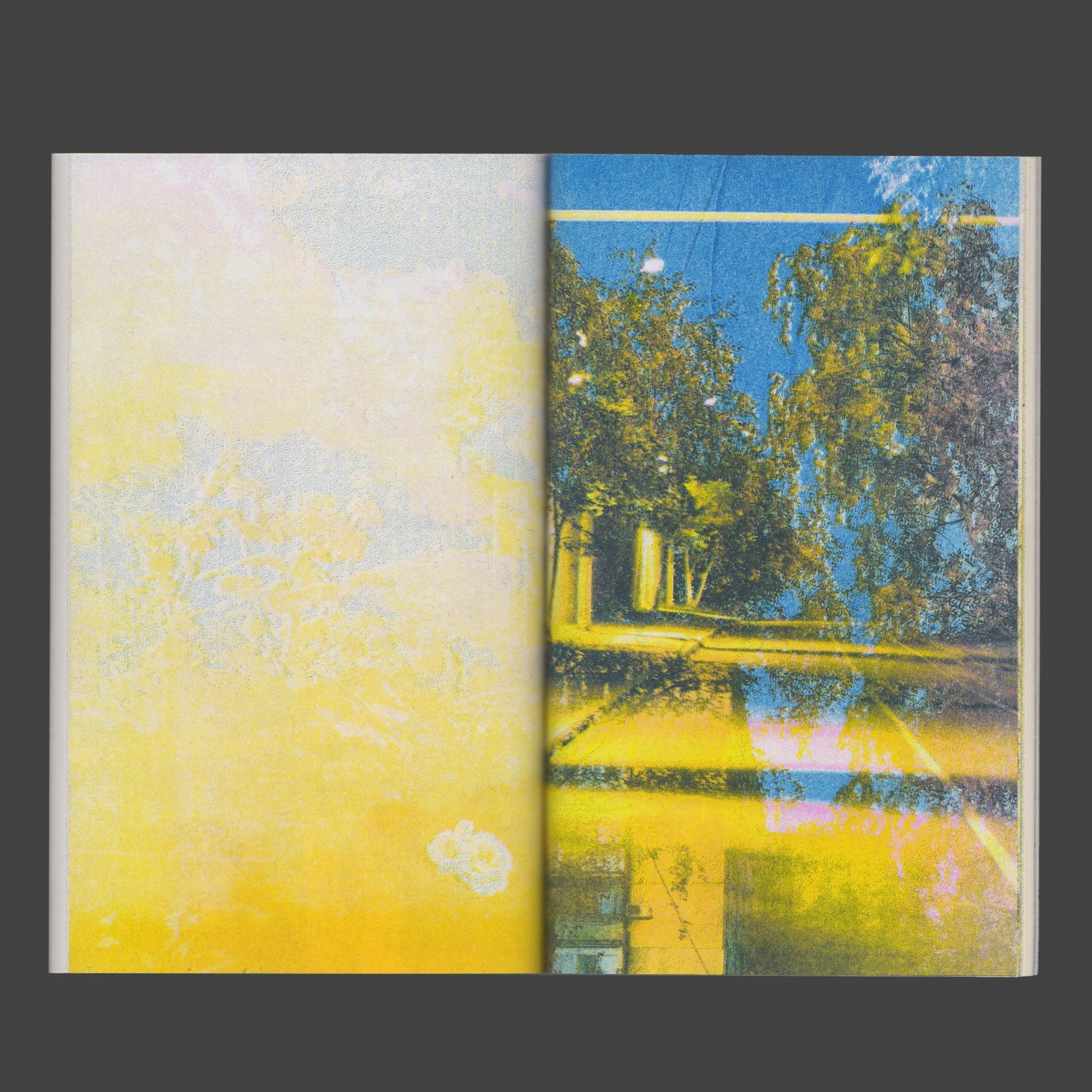
Authors: Kateryna Rudenko, Iryna Zamuruieva, D.Z.
Design, Printing, and Production by Okazjonalne Wydawnictwo Stopka
Kateryna Rudenko's book complements the intimacy of Darja Lukjanenko's story. It is a book with similar notes of apocalypse on the theme of ecology, exile, war, and grief. We see how the war changes the way we look at things and deforms our attitude to something that seems familiar to us. Kateryna doesn't just tell her story of the beginning of the war and her subsequent exile, she also explores folk songs, looking at how they can change their meaning depending on the situation and the reader's perspective.
The protagonist of the text becomes a refugee after the start of the full-scale invasion and begins to do new things for herself. For example, translation. She starts translating folk songs, although she has never translated before: "I translate and share stories - unprofessionally, but in the way I can."
And her way is full of sensitivity, observation, and respect for the past: "My stories are not just a translated lesson about a faraway land, it is a type of grief that embraces and heals my ancestors and generations to come - and me". It is a story in which the past is intertwined with the unspeakable pain of the present, forming a very personal and at the same time very intergenerational story.
This text is followed by Agros, Eros and Thanatos by Iryna Zamuraieva, with illustrations. The text combines personal experiences of the war with mythological sketches. The illustrations are a series of images that resemble double-exposure photographs. They are printed on a woodblock print, which adds graininess and a special expressiveness of colour. Urban and nature photographs are intertwined, and the richness of the colours resembles either the hope of dawn or an all-consuming, destructive fire.
The trilogy of texts is completed with a folk tale by D.Z. called Shubin's Labyrinth. Shubin is a mythological creature that, according to legend, lives in the mines of the Donetsk Basin and warns miners of misfortune.
How are you living? How are you thriving?
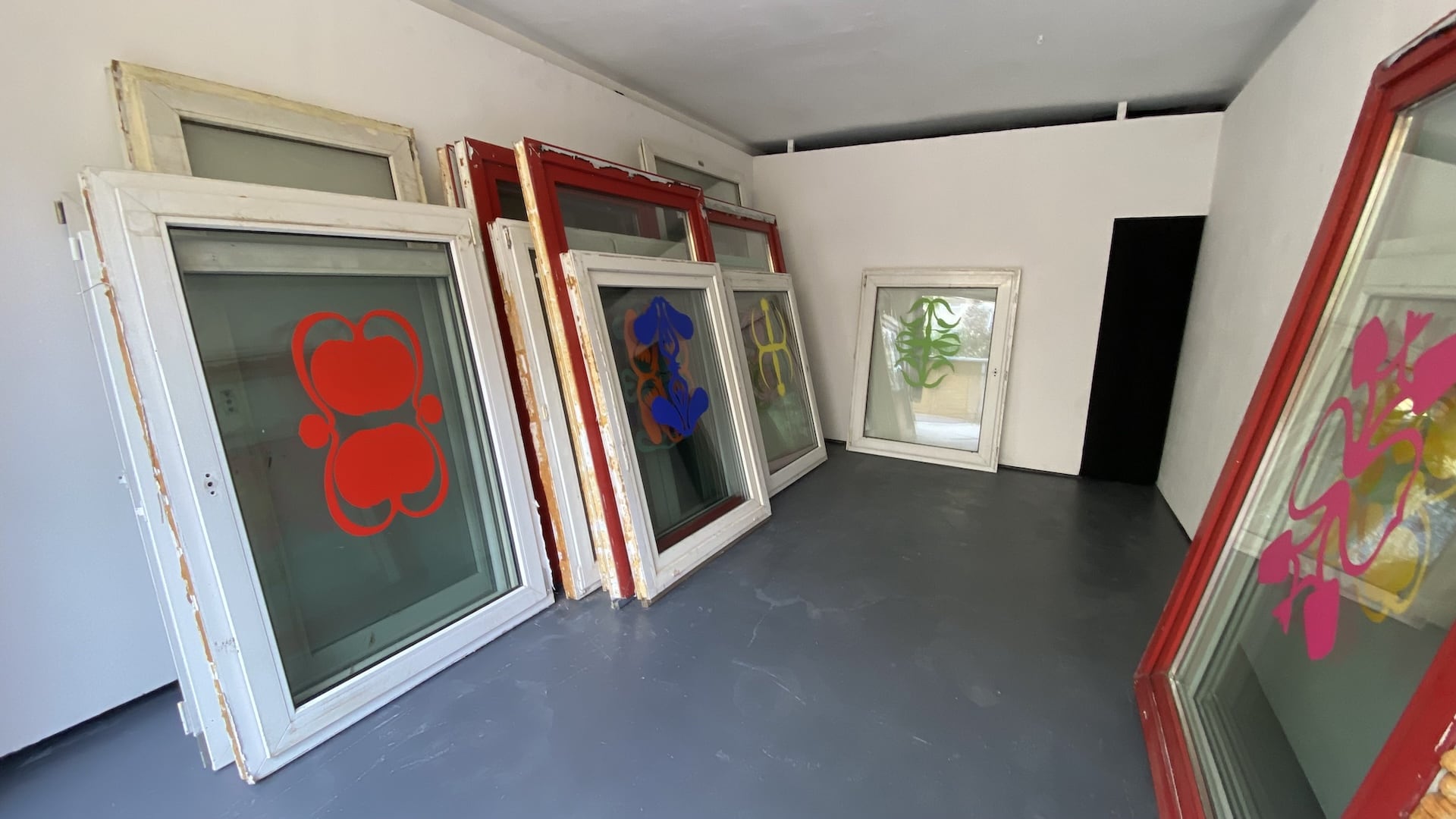
Artists: Tamara Turliun, BRDA Foundation (Zofia Jaworowska, Petro Vladimirov), the Nearest Bomb Shelter project (initially developed by Bickerstaff agency for the 60th Venice Biennale)
Curated by Oleksandra Pogrebnyak and Katie Zazenski
This exhibition tells the story of a fairy tale known to many Ukrainians since childhood: Pumpkin walks around the garden asking his relatives if they are alive and well. This fairy tale takes on a completely different meaning in times of war, when Ukrainians' relatives and friends are in constant danger from shelling, occupation, and captivity. The exhibition redefines intergenerational care and kinship while exploring the role of art in Poland and Ukraine after the start of the full-scale invasion.
In the exhibition situated in the premises of Stroboskop, Tamara Turlyun presented the Ukrainian art of vytynanky, inspired by the vegetables in the song, which symbolise the resilience of family ties and the agrarian relationship between people and the land. These vytynanky are attached to windows collected by the BRDA Foundation for the PROJECT WINDOW project, which collected windows from individuals to rebuild homes and other buildings that were damaged or destroyed during the Russian military actions.
Another project on display was the Nearest Bomb Shelter, created by Bickerstaff originally for the Ukrainian National Pavilion at the 60th Venice Biennale (2024). This project works in a completely different way in Warsaw than in Venice, because the threat of war is more tangible and persistent here. The project should remind us of the presence of war and the inevitability of danger.
After the exhibition in Stroboskop ends, the posters with the shelters will remain on the walls of the city, and the windows, along with the paper vegetables, will be distributed across Ukraine, handed over to families in urgent need of repair and restoration of what has been damaged by the war.
Goodnight Moon
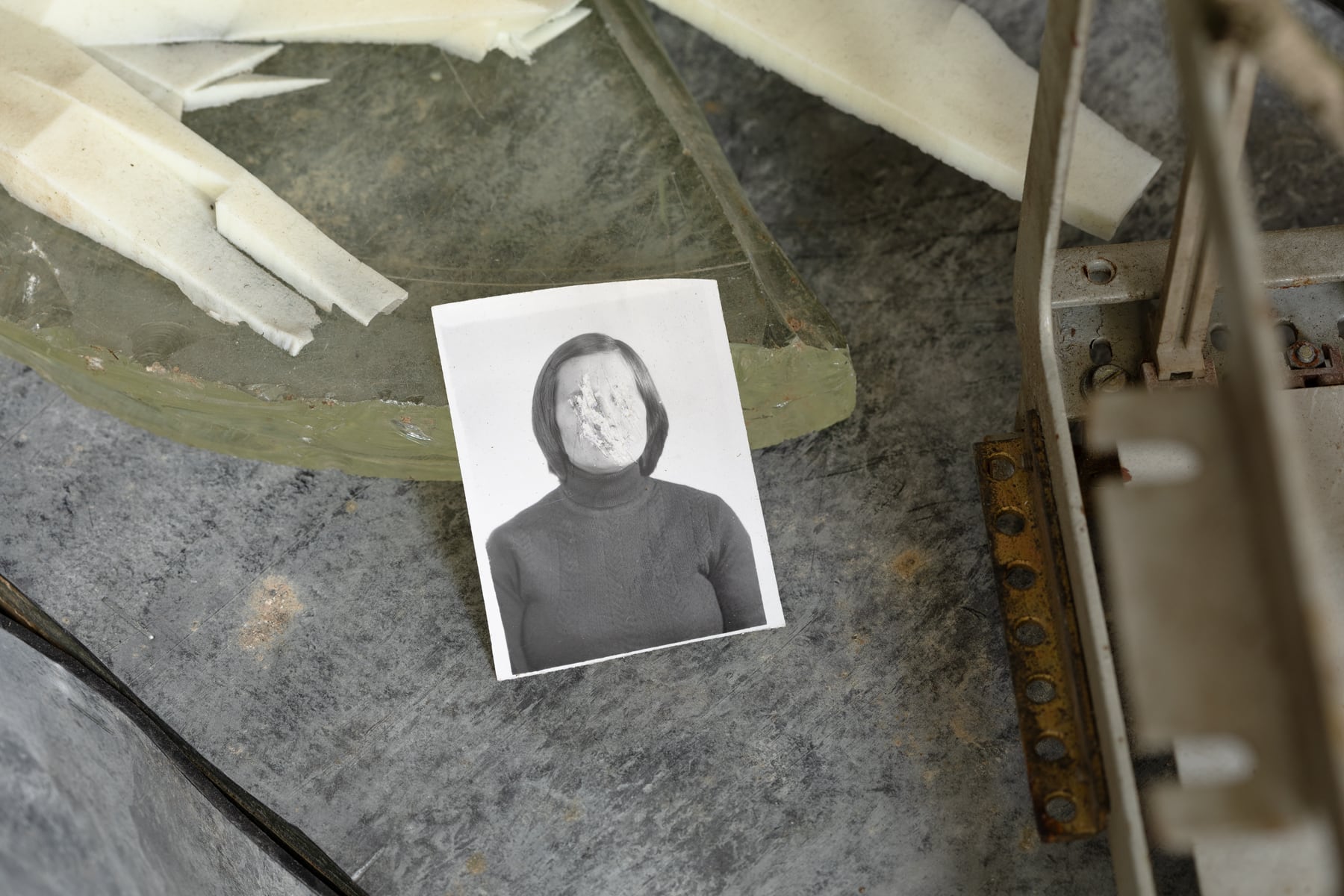
Artists: Yuriy Bolsa, Karina Synytsia, Yuri Yefanov
Curated by Oleksandra Pogrebnyak, Katie Zazenski
The Goodnight Moon exhibition was also one of the project's results. This exhibition is one of two that are occurring within the framework of Under the Lying Stone, Water Does Not Flow, and are conceptually inspired the previously discussed books, I Dream of the Absinthium Fields by Kateryna Rudenko and How to Make Rockets Disappear by Darja Lukjanenko, which are being published by Fundacja Ziemniaki.
The exhibition is based on the classic children's book illustrated by Clement Heard and written by Margaret Wise Brown in post-war 1947, and pays homage to precious places and spaces.
The Ukrainian writer Taras Prokhasko wrote that we often dream about things we remember from childhood. Some landscapes are remembered by naming them and talking about them. After the full-scale war, many Ukrainians lost their homes and live without a sense of safe space. The exhibition is about safe spaces transformed by memory. It is a remembrance of joyful moments, objects that evoke nostalgia and melancholy, but at the same time create a sense of security.
Essays and workshop
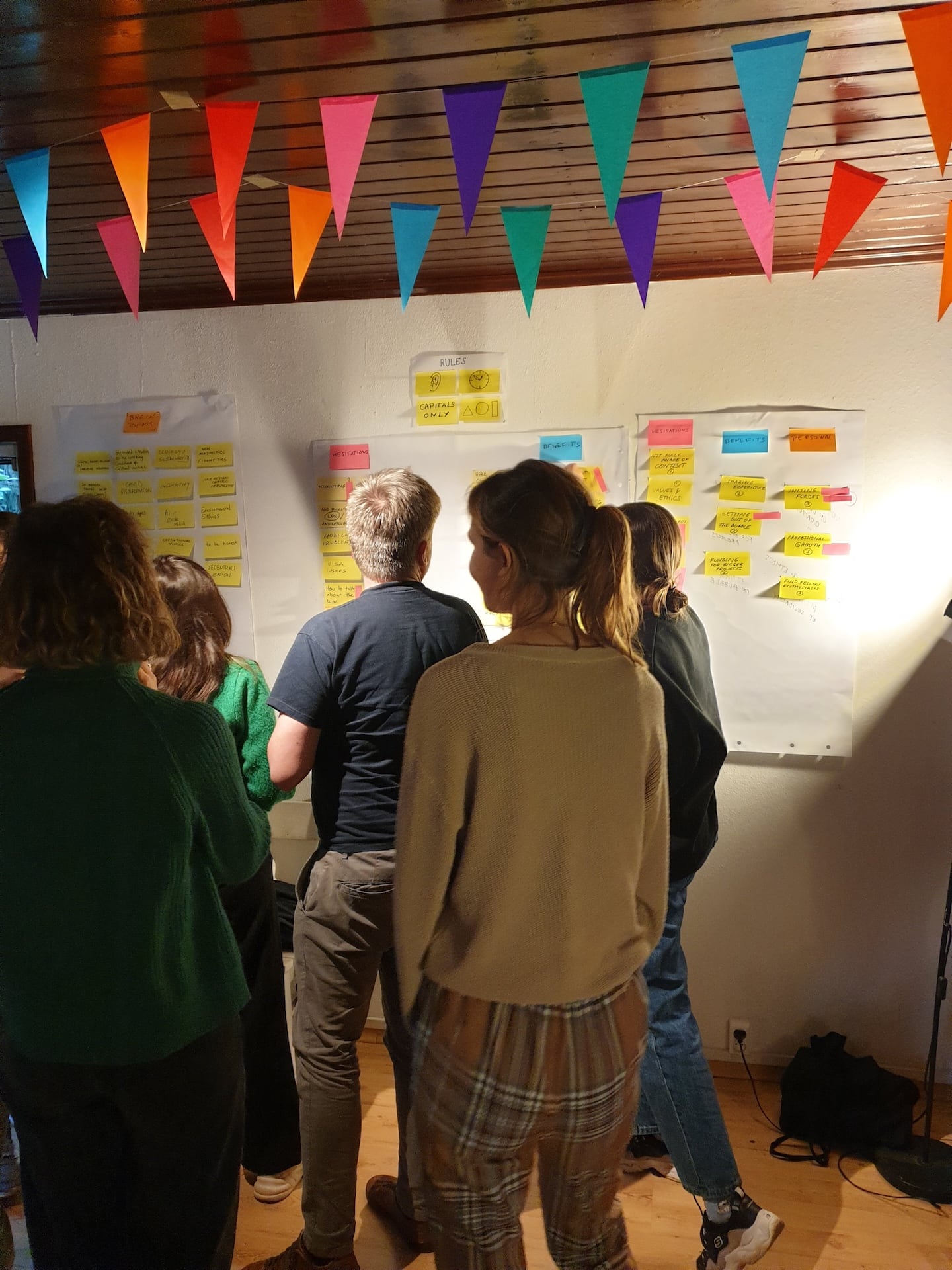
The project has also produced essays by Lizaveta German, Maksym Khodak and Maria Noschenko, Dasha Lohvynova, and Kateryna Volochniuk on art that address important topics of culture, heritage, art history, and activism during the war:
- Thickets, Groves, Apartments, and Garages: on informal exhibitions in Ukraine, 1960s—2022: Part I
- Thickets, Groves, Apartments, and Garages: on informal exhibitions in Ukraine, 1960s—2022: Part II
- Paying Attention
- Investigating the Periphery: Ukrainian Wartime Art in the Framework of Horizontal Art History
- Remembering, Displacement, and War: Contemporary Archival Practice as told through the Family Archive of Oleksii Shepeliuk
A capacity-building workshop focused on collectively discussing and drafting guidelines for how international organisations can collaborate with Ukrainian artists and organisations. The workshop brought together representatives of the cultural sector and the embassy to discuss the needs of Ukrainian artists and how to create a safe space for them. After the workshop, a manual was created to help other international organizations cooperate with Ukrainian ones.
Author: Anna Siedykh
ZMINA: Rebuilding is a project co-funded by the EU Creative Europe Programme under a dedicated call for proposals to support Ukrainian displaced people and the Ukrainian Cultural and Creative Sectors. The project is a cooperation between IZOLYATSIA (UA), Trans Europe Halles (SE) and Malý Berlín (SK).